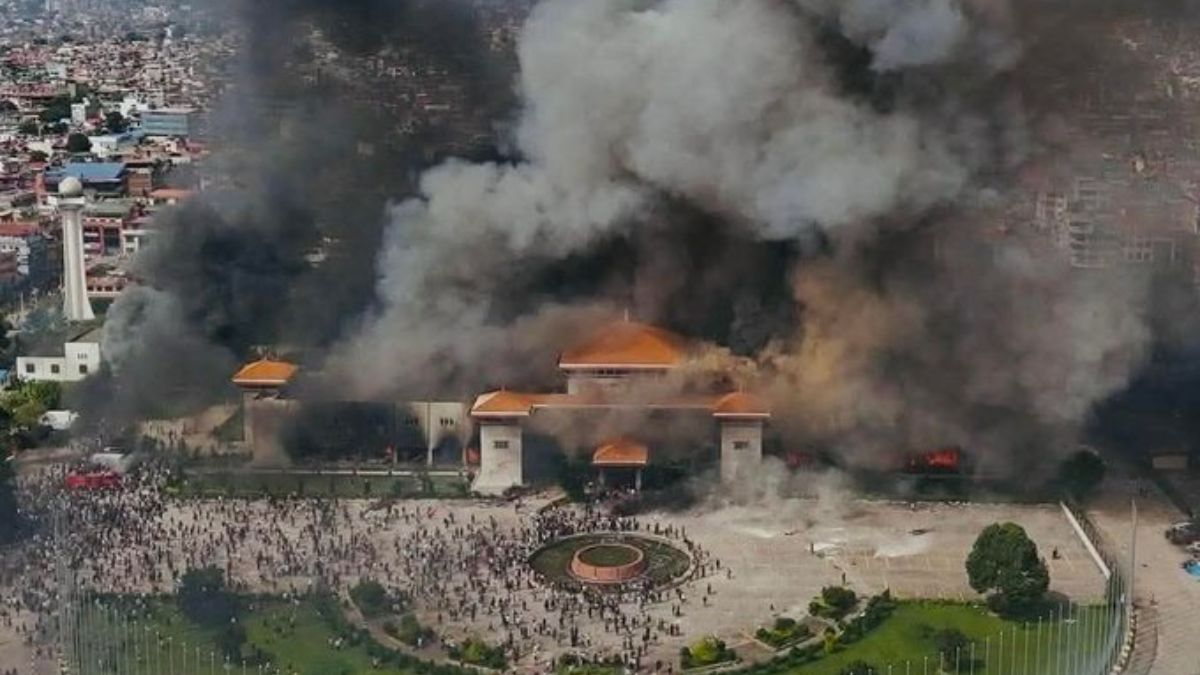Nepal's Supreme Court turned to ashes: Gen-Z protests destroy decades of judicial records
 Nepal Supreme Court set ablaze by protesters | X
Nepal Supreme Court set ablaze by protesters | X
The deadly protest of Gen-Z that rocked Nepal over the last two days saw agitators burning down the country’s Supreme Court to ashes. The arsonists barged into the apex court building on Tuesday afternoon, ransacking the place before setting it on fire, according to local media reports.
A group of protesters entered the Supreme Court premises when the lawyers were still there. They first barged into the building where case documents and files were kept, according to Kathmandu-based Online Khabar. Eyewitness said the arsonists piled the documents in one place and set them on fire. Another group gathered documents from two or three other branches in the same way and set them on fire again.
The report added that the facade of the Supreme Court building and the Shree Yantra, a symbol of justice, were destroyed.
The agitators set on fire all three floors of the Supreme Court, including the office of the Chief Justice, the meeting room, and the office of the Chief Registrar. “The third floor is our most sensitive area. It is the data centre for all the Supreme Court records, which are in the process of being digitized at a rapid pace," the joint secretary of the Supreme Court told Online Khabar. "After the ground floor, they set fire to the data center directly and then started setting fire to other areas," he added.
Although there were security personnel on duty, they were unable to handle the large number of protesters. Another group of protesters then started setting fire to the archives branch on the ground floor of the Supreme Court Annex building. It was this building that housed all the judgments made by the Supreme Court. “Now we have nothing, only ashes,” the joint secretary added.
Though the court kept a backup of its data, the area where the servers were housed was burned down. The Supreme Court's website is now 'down' after attacks, and there is no way to proceed with cases through the software, as it is not possible to hear old cases without documents.
After the records were burned, all the evidence was destroyed, and there is confusion about what to do with those cases, according to reports.
The protesters also attacked the Attorney General's Office in the same style. “They collected all the documents they could, brought them to one place, and set them on fire,” an employee of the Attorney General's Office told Online Khabar.
A Supreme Court judge said Tuesday's arson attack had caused the judiciary's records to 'collapse'. “We are supposed to decide cases by looking at documents and evidence, but nothing remains of them now. What should we do now? These records were not saved through months or years of effort, but decades of hard work. Everything has been destroyed,” the judge added.
Another Supreme Court judge said they plan to hold a meeting after which they will attempt to run the court from somewhere, even if it is symbolic. "We provided services even during the earthquake. Now everything has been destroyed, but we will make an attempt to symbolically reopen the court," he said.
World